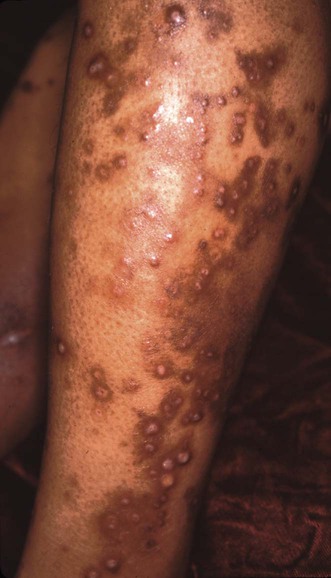Perforating dermatoses

 Reactive perforating collagenosis, which is characterized by the transepidermal elimination of collagen
Reactive perforating collagenosis, which is characterized by the transepidermal elimination of collagen
 Elastosis perforans serpiginosa (EPS), characterized by transepidermal extrusion of elastic material
Elastosis perforans serpiginosa (EPS), characterized by transepidermal extrusion of elastic material
 Perforating folliculitis, in which epidermal perforation involves hair follicles
Perforating folliculitis, in which epidermal perforation involves hair follicles
 Kyrle disease, in which dermal connective tissue perforates through the epidermis.
Kyrle disease, in which dermal connective tissue perforates through the epidermis.
Specific investigations






 Tretinoin 0.1%
Tretinoin 0.1% Tazarotene gel 0.1%
Tazarotene gel 0.1% UVB
UVB Narrowband UVB
Narrowband UVB


